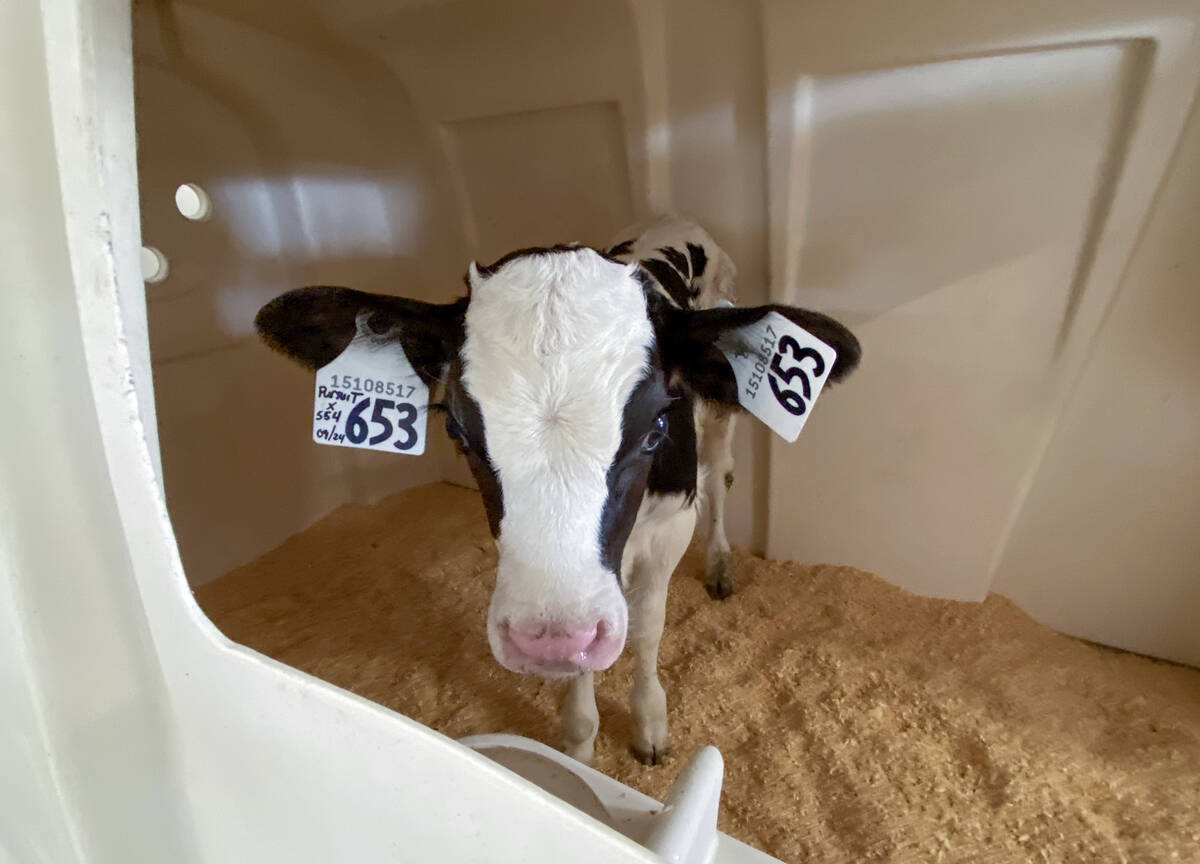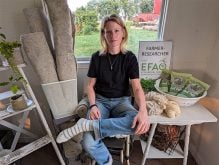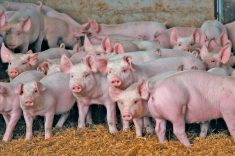Global meat protein supply gaps sparked by African swine fever (ASF) and the pandemic have created expansion potential for the sheep sector.
Melissa Clark-Reynolds, a New Zealand entrepreneur, strategist and foresight practitioner, told those at the recent Ontario Sheep Farmers annual general meeting that the sheep sector has a bright future given current premium prices.
Why it matters: Lamb sales have benefitted from the COVID-19 pandemic and a New Zealand expert says strong prices will stick around for at least the next few years.
Read Also

Lactanet turns methane expertise into business opportunity
Lactanet’s new fee-for-service breeding tool initiative to reduce greenhouse gas emissions in Canadian and Swiss Holstein herds will launch in April 2026.
“Producer prices actually should rise in this next year… because of all of these issues with supply chain,” she said. “But also, I think we’re not going to see them move away from supermarkets as strongly as we thought. People will continue to order restaurant-quality food, but a lot of it will be delivered to home.”
In 2019, the New Zealand sheep industry capitalized on the fallout from ASF issues that saw pork production plummet in some areas of the world when the virus swept through China’s swine facilities.
By February, the World Shipping News reported a refrigerated shipping container shortage in China, and COVID-19 was developing into a pandemic. As a result, Clark-Reynolds alerted her clients that a global supply chain disruption was imminent.
Soon the pandemic affected the livestock protein market by shutting down slaughter facilities, leading to significant and lengthy beef shortages in the United States. That included ground beef, a high-demand product.
“Because they couldn’t access that ground beef, we found that (consumers) were willing to buy ground lamb for the first time in a way that really exceeded any kind of previous demand,” said Clark-Reynolds.
As slaughter capacity increased and the hospitality sector came back, the predicted 30 per cent decline in retail sales didn’t materialize. Instead, consumers continued to buy food for preparation and consumption at home.
Clark-Reynolds suggested a surge of ‘ghost kitchens’ and home delivery of restaurant-quality food will follow the current resurgence globally.
“I like this idea that there’s no disruptive technologies, there’s only disruptive business models,” she said.
She predicts the global shipping crisis will remain in play for the next two years and there’s no indication the supply chain wil lreturn to normal either.
As a trained epidemiologist, Clark-Reynolds said there is a clear connection between climate change and pandemics. She suggested the world can expect more illness to cross the species barrier and impact humans, likely through agriculture, in the next three to three-and-a-half years.
“Hopefully, it won’t be as intense as this one,” she said. “But as animal agriculture, in particular, expands into the rainforest, globally we’re putting mammals into situations where they’ve never cohabitated before.”
Changing patterns in the insect world, especially the range in which disease-carrying insects can survive and thrive, results from climate change and has a potential impact on agriculture.
“(It’s) not very cheerful, but the good news is the resilience we’ve built into our industry during this last year is going to take us through into the next period,” said Clark-Reynolds.
Consumer interest in the carbon footprint of food is increasing and being sustainable won’t be enough. Producers will have to show a degree of regenerative farm practices to garner consumer support.
“Sustainable has become a word that means ‘doing less bad,’ that doesn’t mean leaving the world in a better place,” she said, adding with the industrialization of organic farming, “a lot of consumers are losing faith in the word ‘organic.’ They’re looking for something that’s over and above that.”
While not yet defined, regenerative agriculture encompasses a style of farming that heals the soil and monitors animal health and broad environmental impacts to improve the planet’s overall health.
“We know the impact of sheep on land is much lower than the impact of many other animals that we farm,” Clark-Reynolds said. “It’s important for us to understand that the consumer will drive most of it (regenerative parameters), not farmers.”
However, an essential element in defining regenerative agriculture should include the success and profit margin of farmers so rural communities remain strong, she said.
Consumers are showing more interest in the soil as a carbon sequestration tool and they want to know how farmers will improve long-term soil health.
Clark-Reynolds is working with 23 farms to develop a five-year soil plan to increase carbon sequestration and soil health while improving water retention and drought resistance.
Nestle, Whole Foods and Danone have committed billions and have started paying premiums to farmers who demonstrate management practices that improve soil health, increase carbon sequestration and exemplify animal health and regenerative farming practices.
“I do believe that we have a very bright future thinking about the whole animal and thinking about where the premium prices are for our product,” said Clark-Reynolds.















